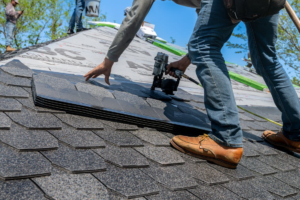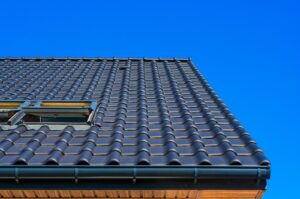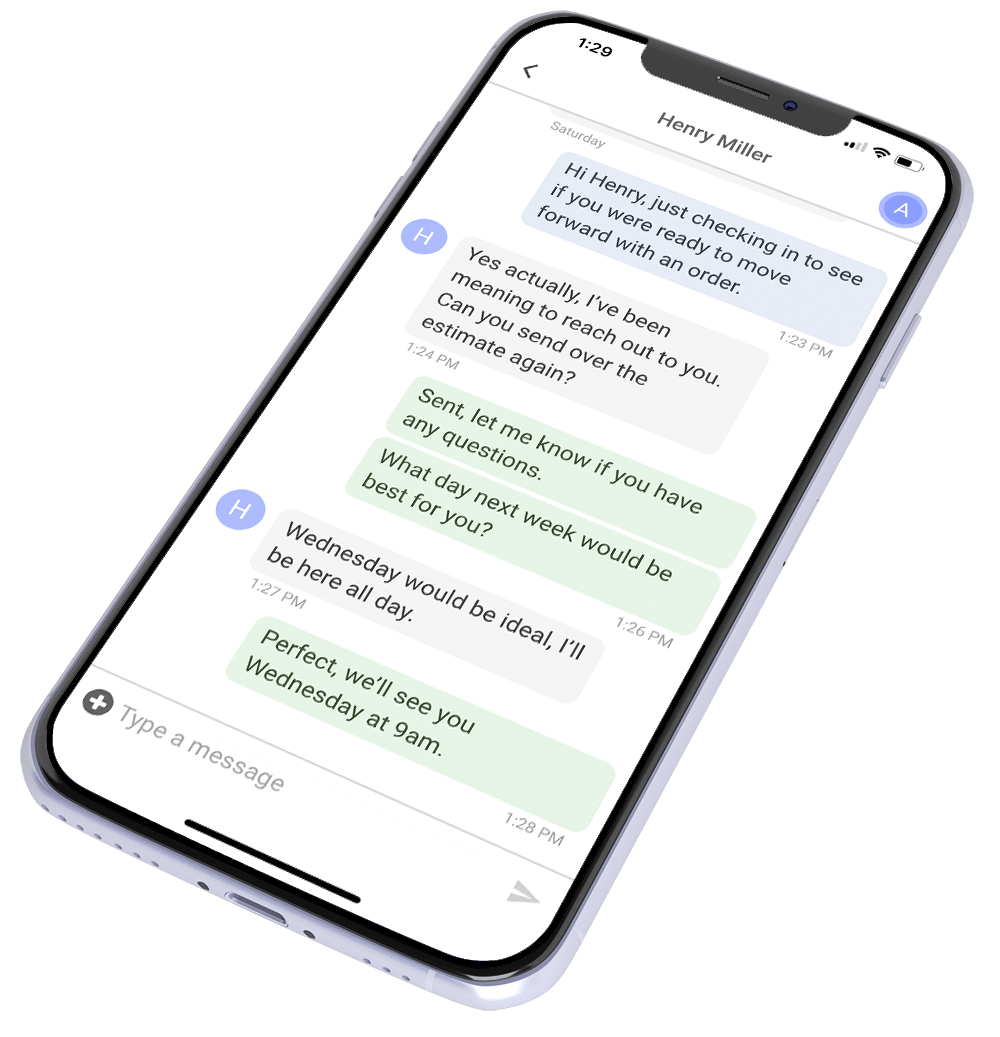What’s the best way to spend your roofing company’s marketing budget without wasting a dime?
Three roofing advertising methods enter. One roofing advertising method leaves. Who will win: PPC vs. Social vs. Print? You’ve probably asked yourself this more than once while staring at your marketing budget. Do you double down on Google Ads? Throw more weight behind Facebook? Or stick with the tried-and-true postcards and yard signs that got you started?
The truth is, not all advertising is created equal, and in the roofing game, where trust and timing are everything, choosing the wrong platform could mean burning cash instead of booking jobs.
We’re digging into what actually works in the real world for roofers. Which platform delivers the hottest leads? Which one builds long-term brand awareness? And which one sounds good on paper but falls flat in practice?
If you’re ready to stop guessing and start advertising smarter, let’s get into the details.
PPC for Roofers: Fast Results with High Intent, but at a Cost
When homeowners search online for a roofer, they’re not casually browsing. They’re ready to hire. That’s where PPC, or pay-per-click advertising, becomes powerful. You can appear right when someone types “roof repair near me,” and if your ad hits the mark, you get the call.
PPC isn’t exactly cheap, especially for roofers. Roofing keywords are among the most expensive in the home services industry. That’s why having a clear strategy is key.
The upside?
There’s a reason why roofing companies continue to invest in PPC:
- You get fast results without waiting weeks or months like you do with SEO
- Your ads reach people with high intent who are actively searching for roofing services
- Google’s Local Services Ads help you build trust with the “Google Guaranteed” badge and visible reviews
Most searchers never go beyond the first page. In fact, around 92% of searchers choose a business from the first page of Google. PPC gets you there instantly.
Want to know how PPC compares to other ad platforms for roofers? Our article on Facebook vs. Google for Residential Roofing Ads dives into the differences and shows which platform is best for specific goals.
The downside?
Despite the benefits, PPC has a few downsides to consider:
- The cost per click can be extremely high, especially in major cities
- Click fraud, where bots or competitors click your ads, can waste your budget
- Without expert optimization, PPC can quickly burn through your ad spend with little return
That’s why many successful roofers combine PPC with longer-term strategies like SEO and content marketing to balance cost and results.
PPC works especially well in certain scenarios:
- After a storm or natural disaster, when emergency repairs are in high demand
- In competitive markets where organic results are crowded
- For high-ticket services like solar roofing or complete roof replacements
If you’re leaning toward Facebook as an alternative or complement to Google Ads, make sure to read our breakdown of 4 Things Great Roofing Facebook Ads Have in Common. It’s packed with proven insights you can apply right away.
Social Media: Branding Powerhouse or Time Suck?
Social media can feel like a double-edged sword for roofing companies. On one hand, it’s the perfect place to show off that freshly completed roof and highlight glowing customer testimonials. On the other, it’s easy to get stuck chasing likes without seeing real leads roll in.
The upside?
Social is incredibly effective for long-term branding and trust building. You’re not just selling roofs; you’re building relationships. Sharing behind-the-scenes videos, before and after shots, and even client shoutouts builds credibility and keeps your business top of mind.
Want proof it works? 68% of marketers say social media marketing has helped them generate more leads. That’s a strong argument for staying active and engaged, especially in local, visually driven communities where your work speaks for itself.
Some key benefits include:
- It’s great for showcasing your recent roofing projects and 5-star reviews
- Retargeting tools let you stay in front of people who already visited your site
- Over time, you build a real sense of community and local trust
But it’s not without its challenges.
The downside?
Traffic from social platforms isn’t always ready to buy. You’re often reaching homeowners in scroll mode, not need a new roof right now mode. And if you’re running ads, watch out for algorithm shifts and ad fatigue, which can quietly tank your results over time.
That’s why pairing social with other strategies, like those mentioned in Roofing Leads Made Easy, can help bridge the gap between attention and action. You’ll also want to diversify your traffic, which we cover in How Many Roofing Lead Generation Sources Do You Need?
Print Advertising: Old School, Still Gold?
Print might not be trendy, but it’s still surprisingly effective in the right context. It taps into something digital can’t always replicate: physical presence and neighborhood familiarity.
The upside?
Print advertising is tangible. People can hold it, see it, and remember it. A well-placed yard sign on a recently finished roof is like a stamp of approval from the neighborhood. Wrapped trucks act as mobile billboards, building trust as they drive through local streets.
Targeted mailers also shine, especially after storms or during seasonal inspection campaigns. Hitting the right mailbox at the right time can mean the difference between being ignored and getting a callback.
Print still wins in these areas:
- You’re working heavily in a specific neighborhood and want to saturate visibility
- You just finished a job and want to plant a yard sign for social proof
- A recent storm or local event created new roofing needs
The downside?
It’s harder to track ROI with traditional print campaigns. You may know how many flyers you sent out, but knowing who actually read or responded is murky at best.
Plus, print gets expensive. Designing, printing, and distributing materials takes time and money, especially if you’re doing frequent drops or large-scale signage.
Print works best when:
- Your service area is small and community-based
- You want to build trust in neighborhoods where people value face-to-face service
- You combine it with digital campaigns, like sending a postcard then retargeting those addresses with Facebook ads
Think of it this way: print earns attention offline, and when paired with online ads, it creates a full-circle campaign that keeps your brand top of mind both on the street and on their screen.
Performance Breakdown: PPC vs Social vs Print
| Category | PPC Ads | Social Media Ads | Print Advertising |
| Cost | You pay when someone clicks | Can set a daily or total budget | Costs more upfront to print and send |
| Targeting | Very specific (location, search terms) | Target by age, interests, location | Only targets people in one area |
| Speed | Instant results | Fast – often within a day | Slower – takes time to print and deliver |
| Tracking | Easy to track clicks and leads | Tracks likes, shares, leads | Hard to measure success |
| Best For | Getting leads from people searching now | Building awareness and retargeting | Gaining trust in neighborhoods |
| Lifespan | Stops when your budget runs out | Lasts as long as people engage | Can stay around (flyers, signs, etc.) |
What the Best Roofing Companies Do
The top roofing companies aren’t just choosing one advertising method. They’re combining multiple channels to work in harmony. Think of it less like picking a single tool and more like building a full toolkit. PPC, social, and print methods play a role, and the best results come when they’re used strategically together.
They Use PPC for Instant Visibility
Top performers lean on pay-per-click advertising to show up immediately when homeowners search for help. Whether it’s Google Ads or Bing, PPC ensures that your business is right there at the top when a roof leak sends someone running to their phone.
It’s fast, measurable, and highly targeted. You control the budget and audience, making it a favorite for quick wins and storm-driven campaigns.
They Use Social to Build Brand and Nurture Leads
Social media is where trust is built. Great roofing companies don’t just post random content, they show off before-and-afters, client testimonials, and videos of crews in action. Facebook and Instagram become platforms for visibility, connection, and community building.
This is also where ProLine’s AI Agents for Roofers shine. These smart agents respond to messages, answer questions, and help move prospects down the funnel 24/7. That means while you’re climbing ladders, your AI is booking estimates and building trust.
They Layer in Print for Local Authority
Print still has its place, especially in neighborhoods buzzing with roofing activity. Yard signs, truck wraps, and flyers mailed right after storms all add to your local presence.
Print isn’t just about visibility, it’s about physical proof. People trust companies they see in their own streets, and when print is combined with online efforts like retargeting, it becomes even more powerful.
They Keep Everything Consistent
What separates the best from the rest is alignment across all platforms. Messaging, branding, tone, and timing all work together to build familiarity.
That’s where strong backend systems matter. ProLine’s Roofing Project Management Software helps your team stay coordinated from the first ad click to the final invoice. No more production day panic or dropped balls, just smooth processes and happy customers.
Turn Your Ad Spend Into a Sales Machine
When it comes to marketing your roofing business, winging it won’t cut it. The most successful contractors aren’t throwing money at random platforms.
They’re using PPC to be found in the moment of need.
They’re showing up on social to build trust and relationships.
They’re layering in print to boost neighborhood presence.
And they’re tying it all together with the right systems to convert more leads into jobs.
If your current advertising feels like a gamble, it’s time to take control.
ProLine gives you the tools to make every dollar count without the guesswork.
👉 Book a demo today and see how ProLine helps roofers turn traffic into booked jobs and happy customers.




